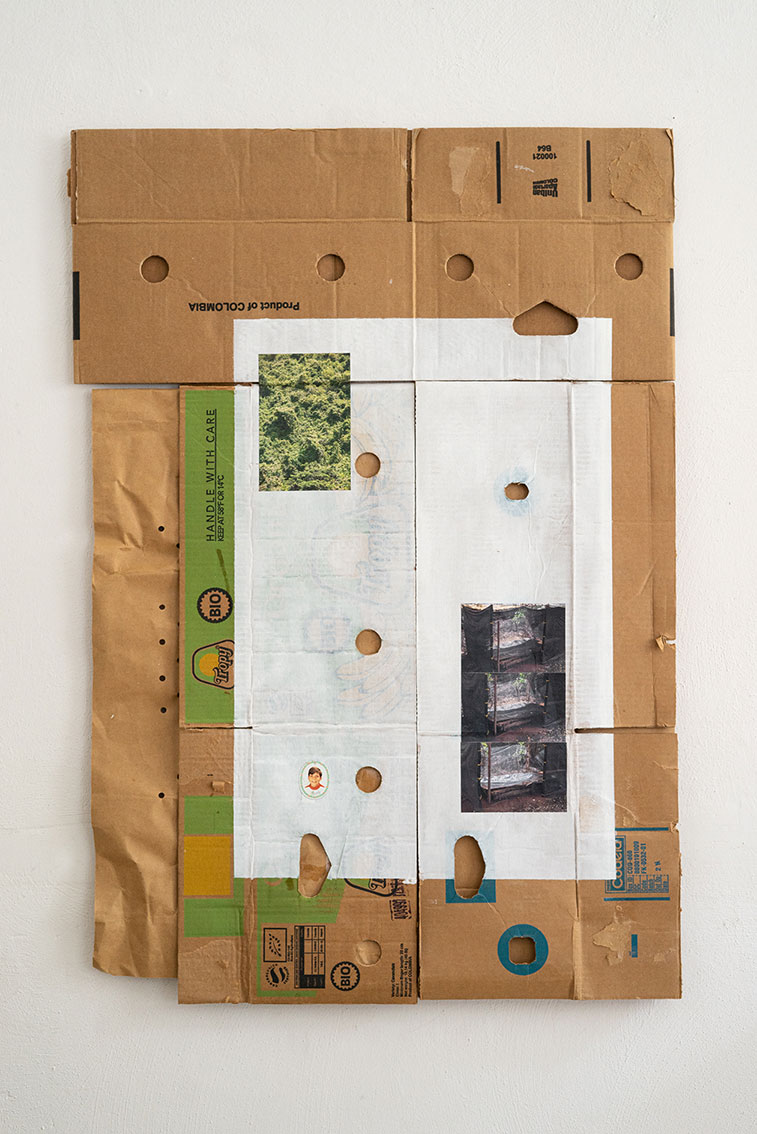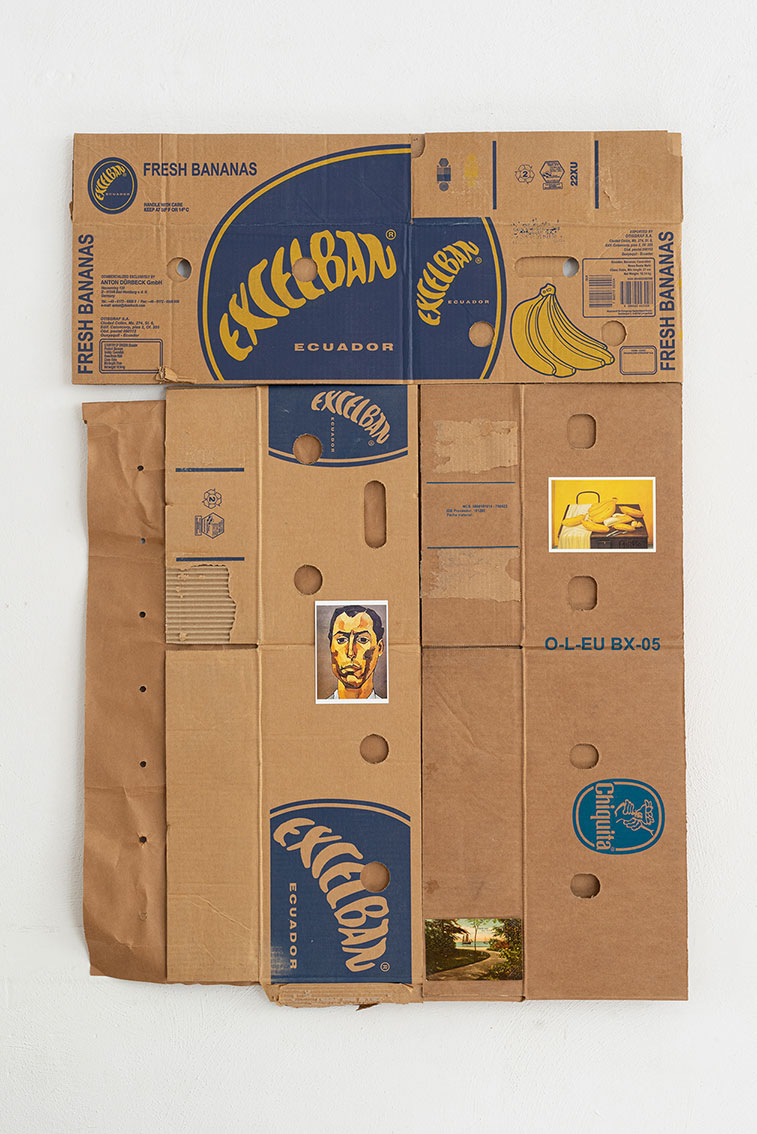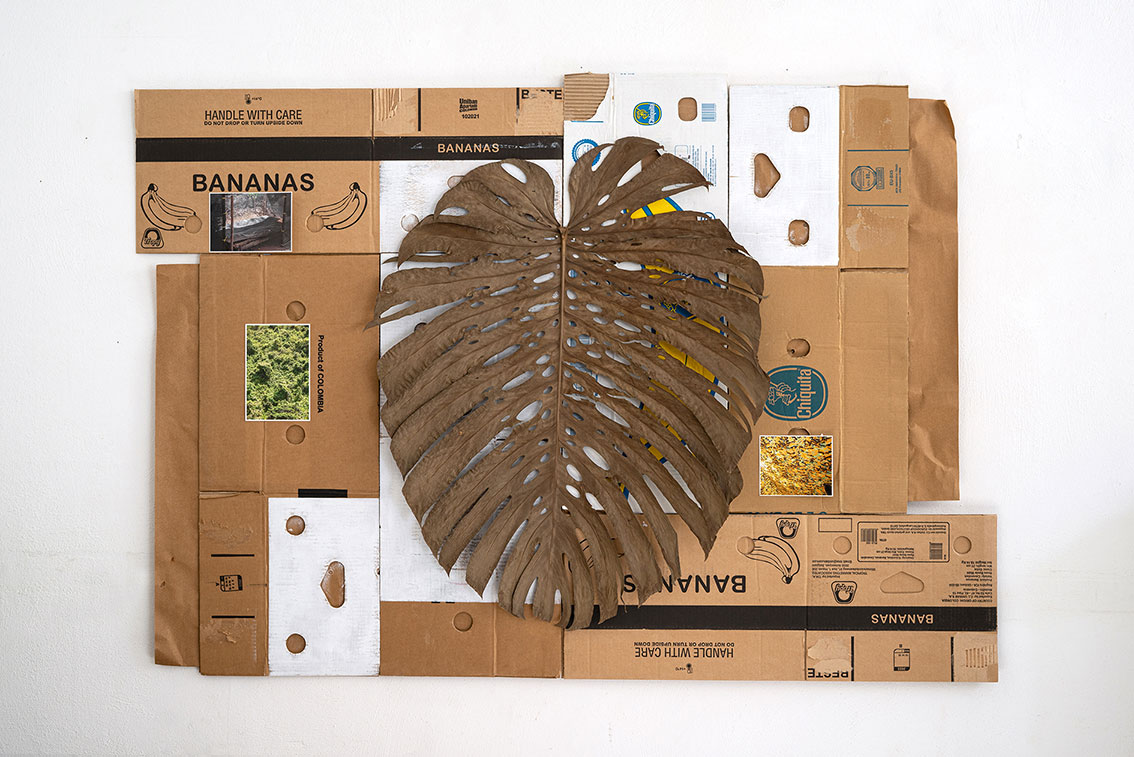Fruits & Labour II
Since 2022, Inkjet Prints, acrylic on cardboard,


Fruits & Labour II. Manzana, 2022, Inkjet Prints, acrylic on cardboard, 110 x 175 cm ; Fruits & Labour II. Drummond, 2022, Inkjet Prints, acrylic on cardboard, 126,5 x 87 cm
Fruits & Labour (I & II) deal with the global economic contexts of the armed Colombian conflict and the so-called paraeconomía. Paraeconomía refers to those multinational corporations that hired paramilitaries to murder trade unionists and leaders of social movements, which in turn strengthened the support of the guerrillas among the rural population. These include among others Chiquita, Coca Cola, Postóbon, Hyundai, Nestlé, British Petroleum, Dole and Del Monte.
At the beginning of the 20th century, the United Fruit Company (U.F.C.), now Chiquita, forced numerous states in the Caribbean and Latin America into neocolonial dependencies through its aggressive expansion. Banana workers had to work under exploitative, undignified conditions. Their wages, however, were usually paid in tokens, which could only be redeemed in stores operated by the U.F.C. Governments that resisted the export duties and tax breaks dictated by the U.F.C. were overthrown by their U.S. backed political influence and replaced by dictatorships, for example in Honduras in 1910 or in Guatemala in 1954.
In Colombia, up to 2,000 striking U.F.C. workers were murdered by the military on December 6, 1928. The banana massacre is considered one of the decisive events of the subsequent era of La Violencia and the founding of the guerrillas, which in turn gave rise to the ongoing armed conflict in Colombia.



Fruits & Labour II. Tropy, 2022, Inkjet Prints, Chiquita-Heintje tin badge, acrylic on cardboard, 126,5 x 87 cm; Fruits & Labour II. Excelban, 2022, Postcards on cardboard, 126,5 x 87 cm; Fruits & Labour II. Uniban, 2023, Inkjet Prints, leaf, acrylic on cardboard, 125 x 172 cm